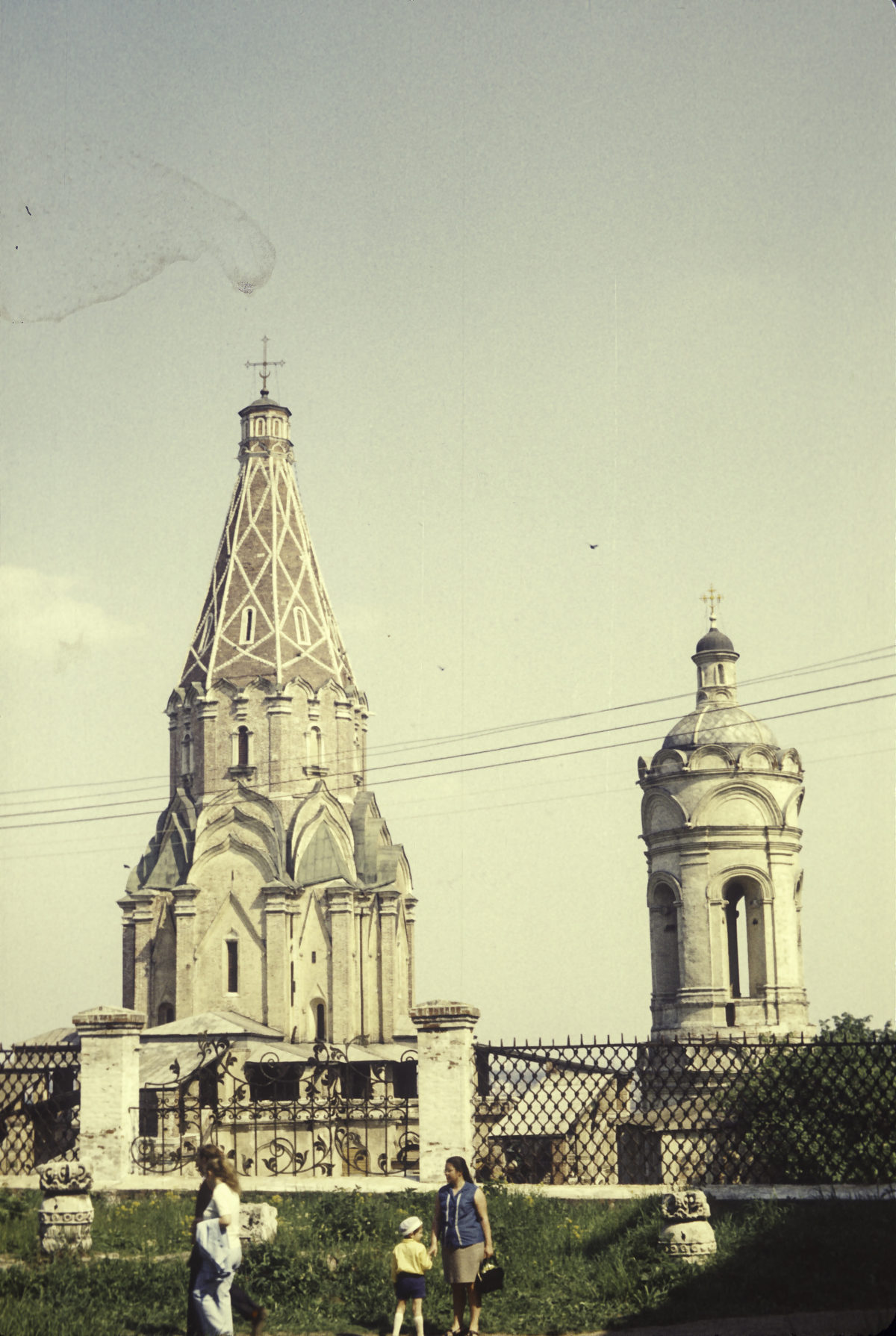This post is about two excursions I took in the Moscow area in the spring of 1973 – one to a former royal estate called Kolomenskoye, the other to the Donskoy Monastery in southeast Moscow.
The name Kolomenskoye (accent on the second syllable) owes itself to its location, several kilometers to the southeast of central Moscow on the road leading to the ancient town of Kolomna (now an industrial center; the Kolomna 37D diesel engine was the standard powerplant for Soviet submarines in World War II and after).
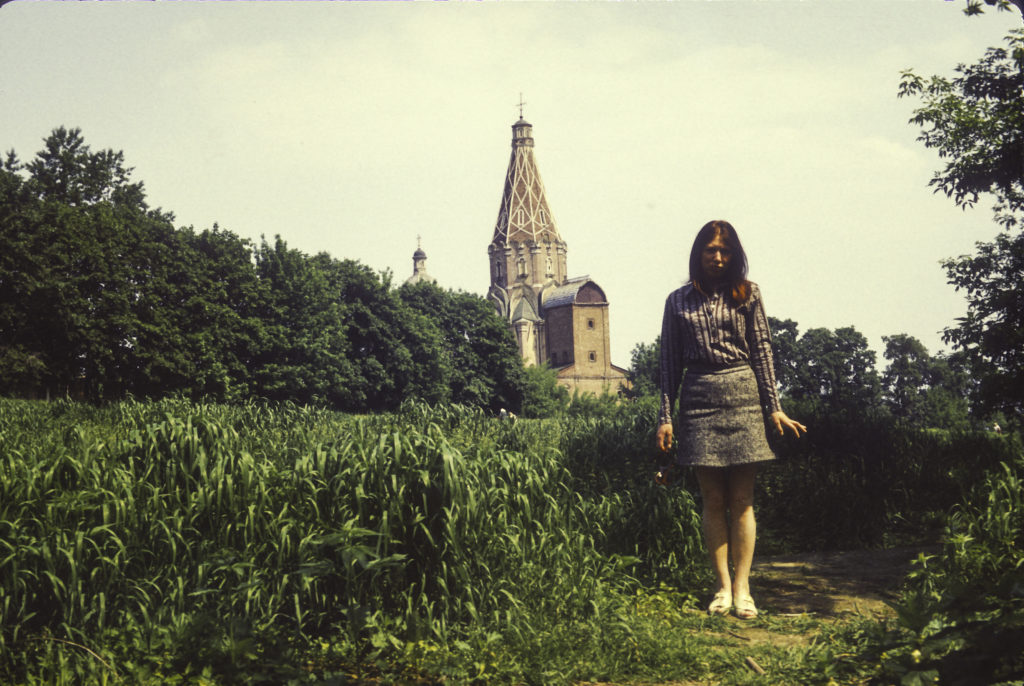
Kolomenskoye came to prominence as the site of the Church of the Ascension, built in 1532, toward the end of the reign of Grand Prince Vasily III of Muscovy, to commemorate the birth of an heir to the throne, who grew up to be Ivan IV – the Terrible. The church represented a dramatic departure from previous Russian tradition, which relied on Byzantine models, though with distinctive Russian features such as onion domes. The Church of the Ascension drew its inspiration from small wooden parish churches of the Russian north country, which were built with tent-shaped roofs to prevent snow from building up on them during the hard winters. The construction of the Ascension Church in Kolomenskoye started a trend, with tent-roofed churches becoming widespread during the reign of Ivan the Terrible and afterward; it is represented in St. Basil’s Cathedral on Red Square. The trend came to a halt in the mid-17th century with the advent of Patriarch Nikon, who considered tented roofs to be un-canonical. He favored a more flamboyant style with rotundas and rows of corbel arches called kokoshniki, as exemplified in the Church of St. Nicholas at Khamovniki.
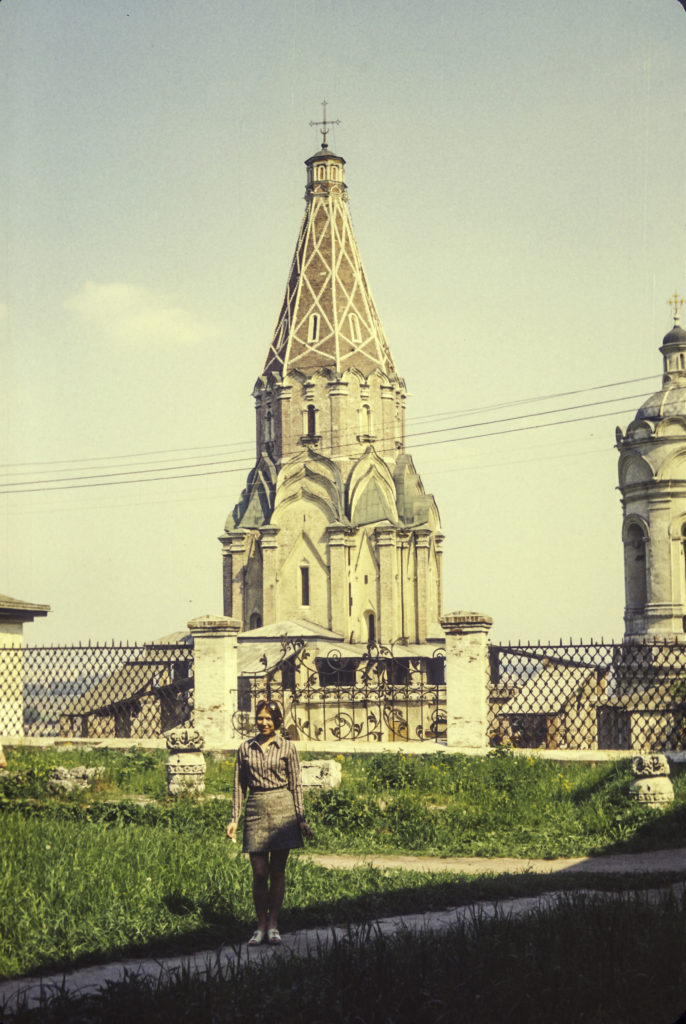
During the Soviet period, a number of old wooden buildings and other objects of historical significance were relocated from various regions of the USSR to Kolomenskoye to ensure their preservation. One such building was the barbican (gate) church of the Nikolo-Karelskoe Monastery. Located in the far north of Russia, in the port of Severodvinsk on the coast of the White Sea, this monastery was one of the first places encountered by English sailors on the Chancellor expedition of 1553 in their quest to open trade with Muscovy. The monastery still exists, but the wooden gateway, which contains a small church, is now in Kolomenskoe Park.
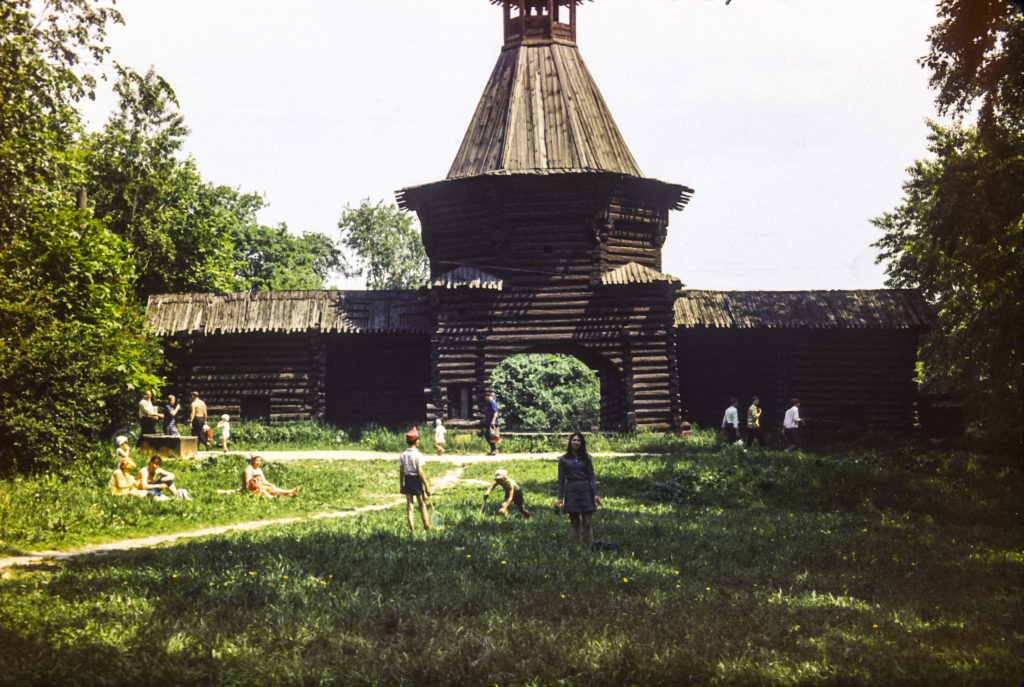
Another object which I suspect was transported from elsewhere, most likely the Far East, was a stone Buddha-like figure standing off by itself in a remote corner of the park. Vera posed next to it with her hands folded just like the statue. Unfortunately I didn’t write down the words on the sign next to it, so I don’t have any information about its provenance, and there is nothing about it on the Kolomenskoye website. Sometime I’ll go back there and rectify that omission.
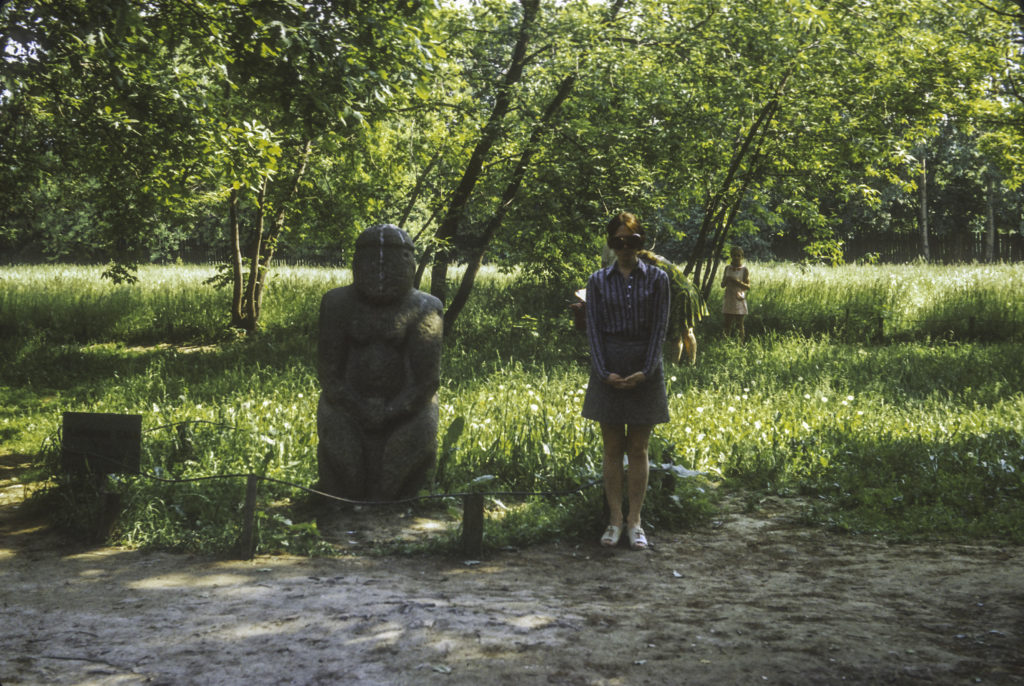
Tsar Alexei Mikhailovich, who reigned from 1645 to 1676, built a great wooden summer palace at Kolomenskoye, which became his favorite residence. Peter the Great, despite his aversion to Moscow, spent time in Kolomenskoye, and his daughter, the future Empress Elizaveta Petrovna, was born in the palace in 1709. Sadly, in 1768 Catherine the Great tore down the palace, which by her time had fallen into decrepitude. She built a new, less grandiose stone-and-brick palace, but it in turn was demolished in 1872. The post-Soviet Moscow city government undertook a full-scale restoration of the 17th-century wooden palace and finished it in 2010, and next time I visit Moscow I’ll be sure to see it.
Donskoy Monastery
The Donskoy Monastery was founded in 1591 on the site where a church holding a famous icon, Our Lady of the Don, had previously been located. The monastery was founded to commemorate the deliverance of Moscow from a raid by the Crimean Tatars. However, it remained a stepchild for many years. The first cathedral was on the humble side – after the cataclysmic upheavals of the reign of Ivan the Terrible, resources were lacking for grandiose building projects. But in the late 17th century, new and generous donations of land and serfs began to flow in, and in 1684 the Regent Sofia Alekseevna began the construction of a much more pretentious cathedral, known as the New or Great Cathedral.
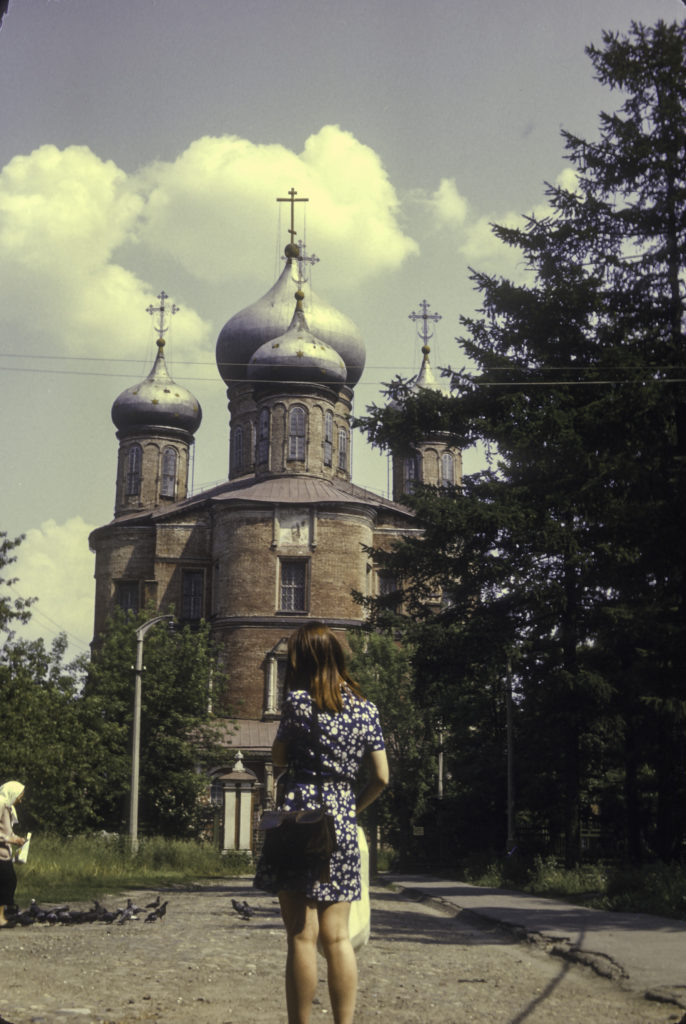
The imposing walls of the monastery, with their stout crowned towers, date from 1686-1711.
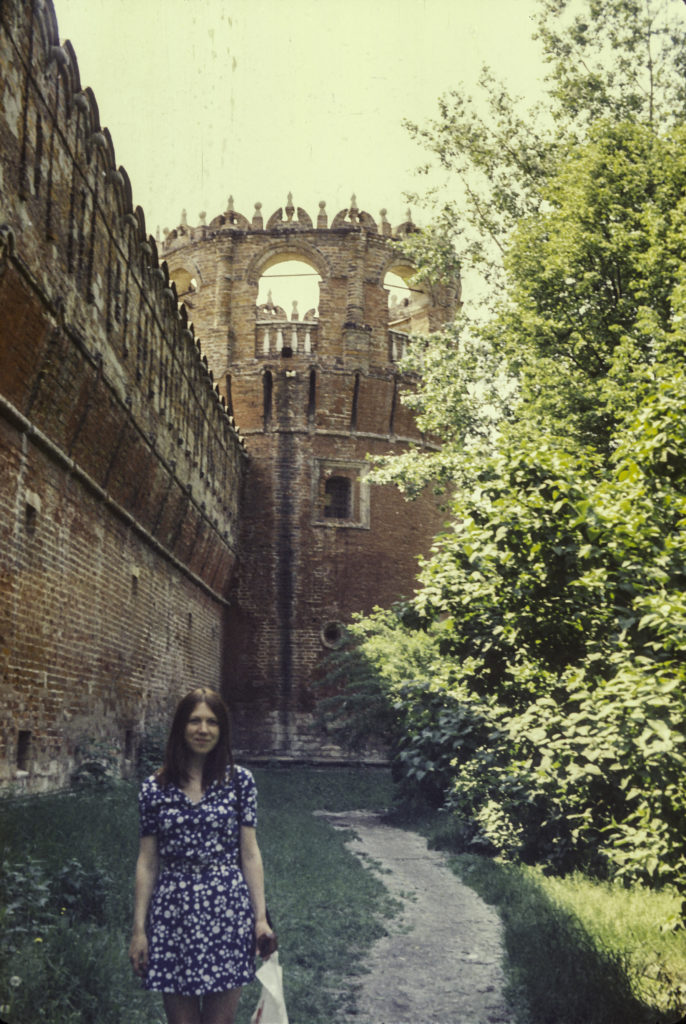
The Donskoy Monastery has two gate churches, but I only photographed one of them, the Gate Church of the Tikhvin Icon, which was built in 1713-14. You can see pictures of the other one, the Barbican Church of Sts. Zachary and Elizabeth with its bell tower, on the monastery’s Wikipedia web page.
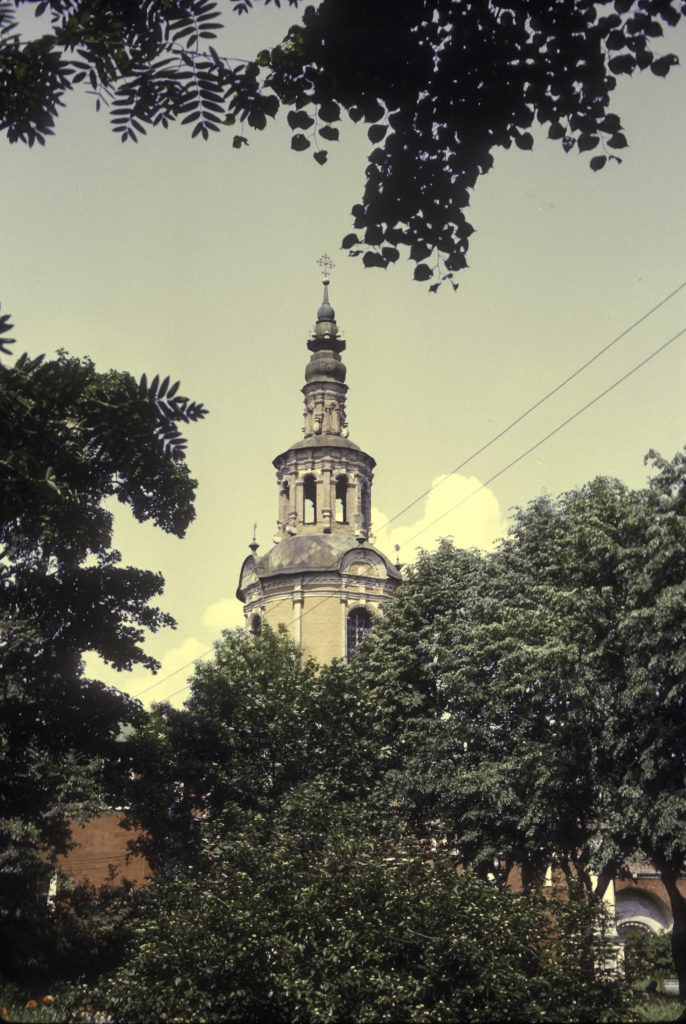
The flowers in bloom at the Donskoy Monastery were extraordinarily beautiful, and I took a shot of Vera sniffing one of them with the Tikhvin church as background.
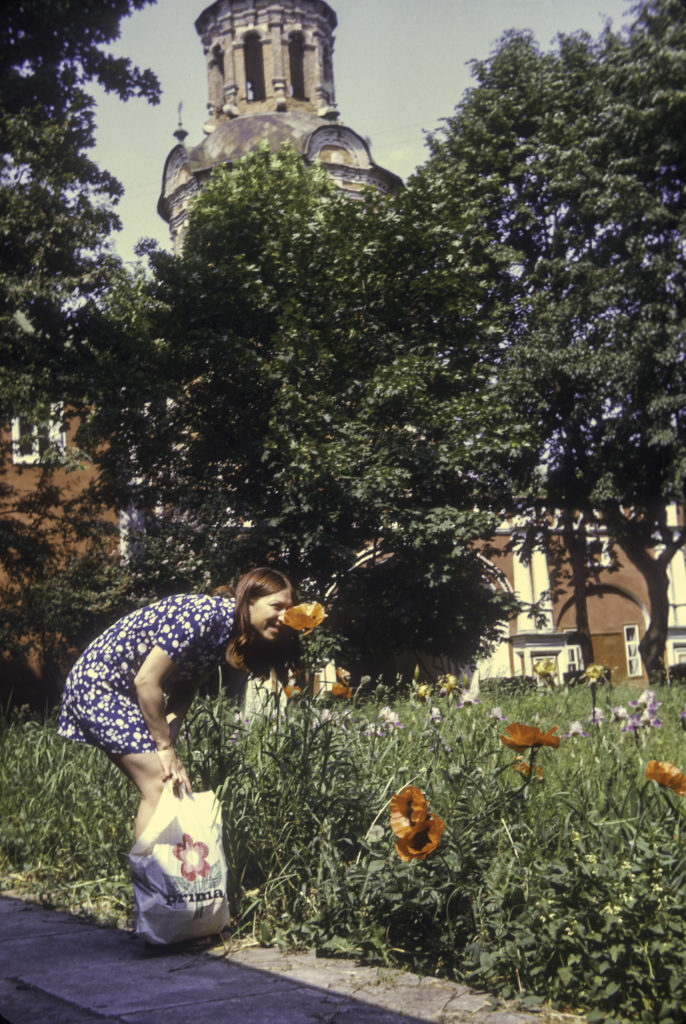
I never found out what kind of flowers these were, although my guess is that they are a type of poppy.
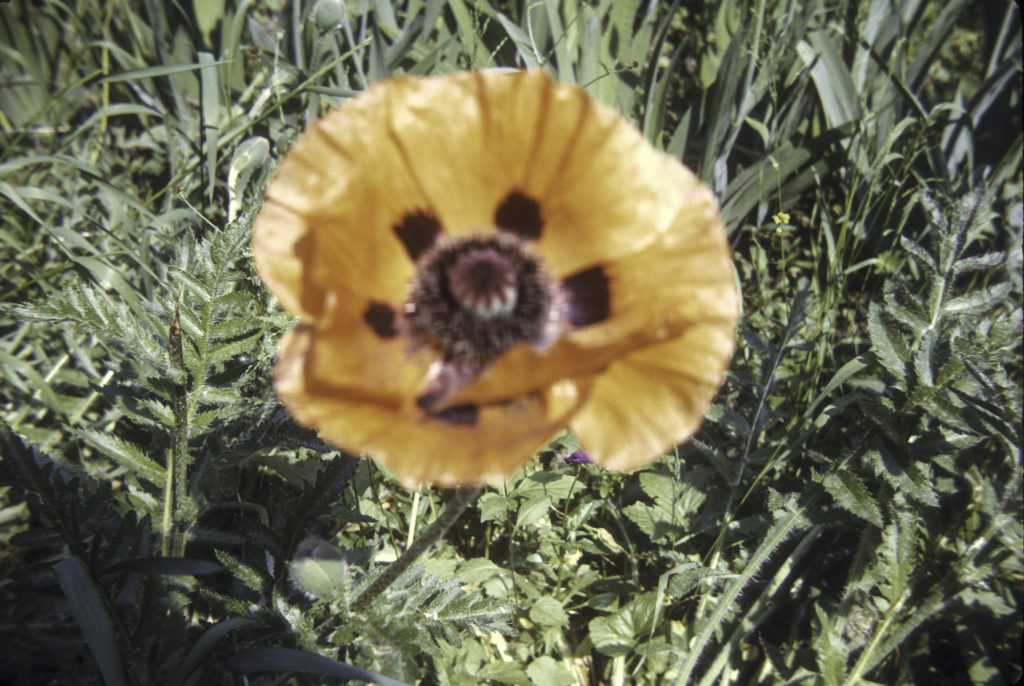
Like Kolomenskoye, Donskoy Monastery was one of those places where people brought items that they had salvaged from churches and other historical sites demolished by the Soviets to make way for their own typically dreary and banal construction projects. Among these salvaged items were elaborate door and window frames, which were physically inserted into niches carved into the walls of the monastery, with their provenance recorded in plaques embedded in the walls next to them. (Unfortunately, I didn’t note what was written on the plaques.)
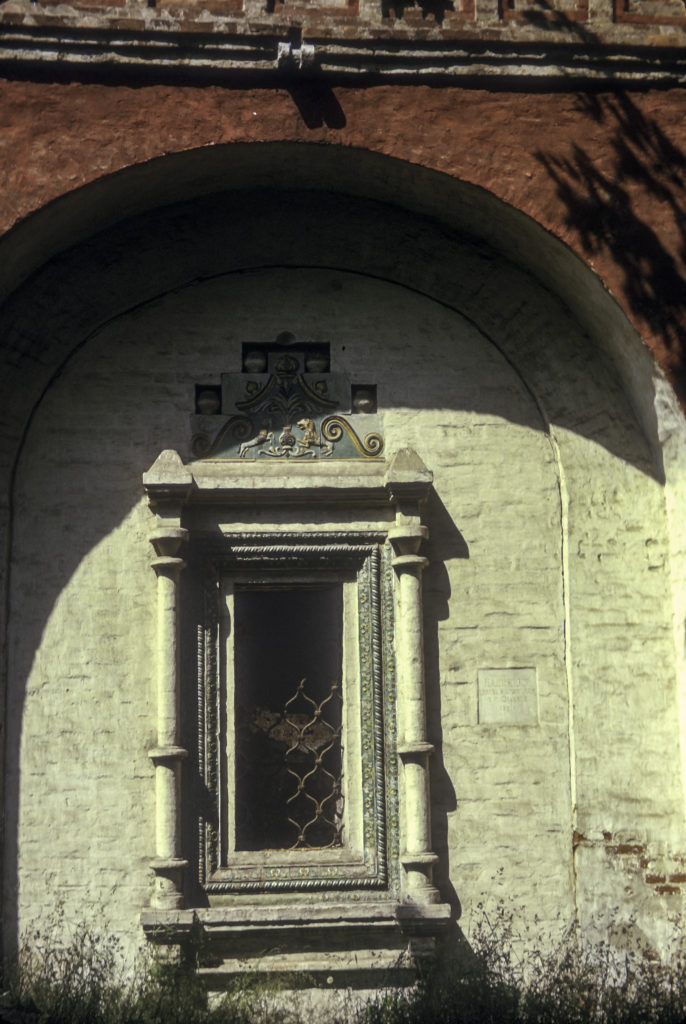
In one of these niches, in which an ornate door-frame was embedded, Vera posed with a funny hat she made from an elephant-ear leaf.
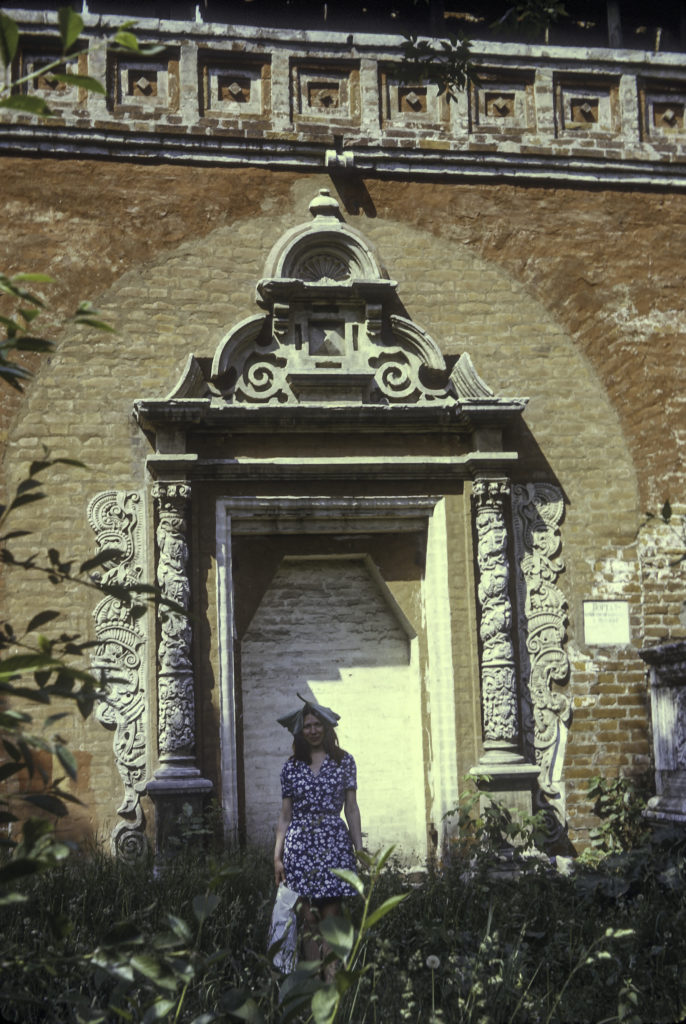
But to me the crowning glory of these reclaimed treasures was the relief of Sergei of Radonezh blessing Dmitry Donskoi. It’s worth relating some of the historical background of this sculpture, for those viewers unacquainted with the events that inspired it.
By 1380, Russia had been under the domination of the Mongol Golden Horde for over a century. But in the 1370s the Golden Horde was weakened by factional rivalries, with several contenders vying for the throne. Meanwhile, Grand Prince Dmitri Ivanovich, ruler of Moscow since 1359, had been acquiring new territories and increasing his power. One of the claimants to the throne of the Golden Horde, a general named Mamai, decided to bolster his authority by taking Dmitry down a peg or two, and went on the attack, meeting the Muscovite forces on Kulikovo Pole near the Don River in September 1380.
In 1380, the most revered spiritual leader in Russia was Sergei of Radonezh, founder of the great Trinity-St. Sergei Lavra (monastery) near Moscow. He generally avoided politics, but he made an exception in 1380. He conferred his blessing on Grand Prince Dmitri and sent two warrior-monk champions to his aid. One of these, Alexander Peresvet, opened the Battle of Kulikovo Pole by riding in single combat against the Tatar champion, Temir-murza. The two killed each other in the first charge. Then the real battle began. After a savage struggle, the Tatars were routed. Grand Prince thereafter became known as Dmitry Donskoi, Dmitry of the Don.
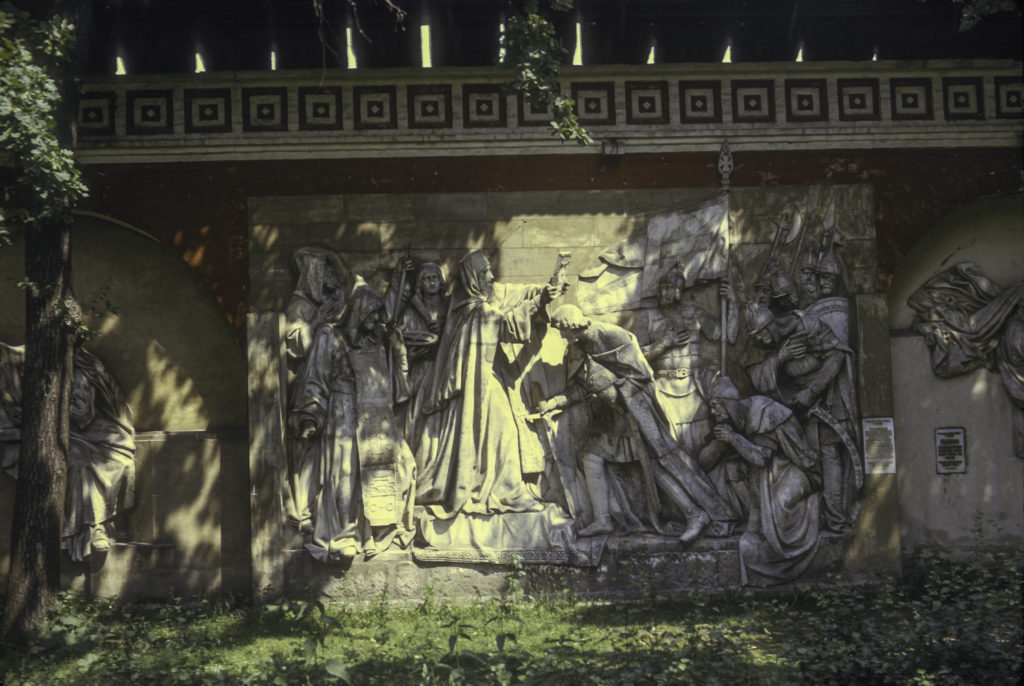
Ironically, the person to benefit most from the Russian victory at Kulikovo Pole was Mamai’s strongest rival, Khan Tokhtamysh, to whom the survivors of Mamai’s army transferred their allegiance afterward. Tokhtamysh attacked and burned Moscow in 1392, forcing Dmitry Donskoi to reaffirm his vassalage to the Golden Horde. But Dmitri kept the coveted patent to act as tax-collector of Russia for the Mongols, and thereafter the power of the Grand Prince of Moscow only continued to grow. A century after the Battle of Kulikovo Pole, the Russians under Ivan the Great threw off the Mongol yoke altogether.
The relief St. Sergei blessing Dmitri Donskoy on the eve of the Battle of Kulikovo Pole was created for the Cathedral of Christ the Savior in Moscow in 1849 by sculptor A. V. Loganovsky. On December 5, 1931, the Cathedral was demolished, and Loganovsky’s relief sculpture was rescued and brought to the Donskoy Monastery, where it remains to this day. Although the Cathedral of Christ the Savior was rebuilt after the collapse of the Soviet Union, the original relief of St. Sergei blessing Dmitry Donskoi was not restored to it; instead a version replicated in bronze was installed.
